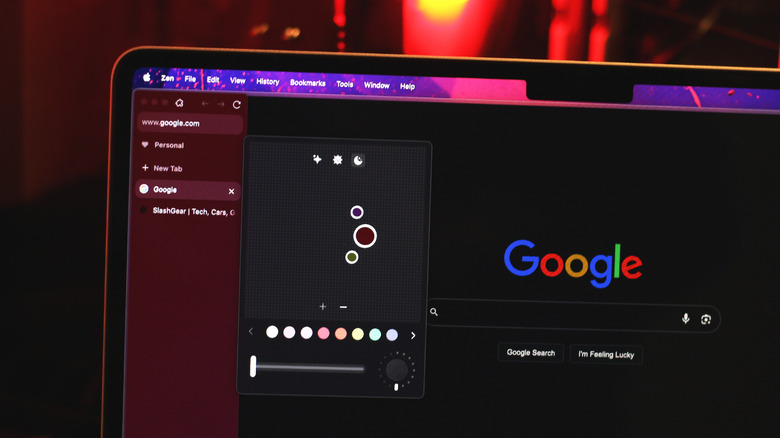We talk about phone options, app alternatives, or even which music provider is currently ripping us off the least, all the time — but one thing is almost always standard — the browser we use. Google Chrome enjoys close to 70% market share, which is unsurprising given that you find it pre-installed on most Android devices. That’s not all — Chrome’s largely clutter-free user interface and deep integration with hundreds of extensions are why, irrespective of the operating system, it’s one of the first apps people install (sorry, Microsoft Edge and Safari).
However, if you’ve been even remotely into the tech circle lately, you may have heard of a new entry in the browser monopoly — Zen. It is an open-source, privacy-focused browser that doesn’t run on the Chromium engine that most other web browsers rely on. Instead, Zen uses Mozilla Firefox as its foundation — which is a good sign, since Firefox has been around for ages and has built up a solid reputation for privacy and performance — two things that a web browser needs to nail.
But what is it exactly that has attracted over nine million downloads for Zen Browser on GitHub alone? Does it offer any unique features not available in Google Chrome? Well, it turns out that the hype behind Zen is a healthy mix of exciting customization options and a privacy-oriented approach — something that has always been a hot debate among Chrome users.
Zen’s got a trendy design and rich customizability
The instant you boot up Zen for the first time, you realize why it’s been leaving a lasting impression on many users. Unlike most popular alternatives to Google Chrome that have a straightforward setup process, Zen draws you in with the eye-candy of its onboarding experience. You get to pick your browser’s theme, mess around with the color gradients’ direction, and even play around with a dial to amplify a grainy background effect. You can choose to import all of your bookmarks and extensions from your previous browser too.
Then you get launched into the actual browser — something that looks fundamentally different from Chrome. Zen adopts the trendy vertical sidebar layout as opposed to the usual horizontal tab placement you find in Google Chrome or Firefox. A major UI shift like this requires quite some effort to get used to. Zen’s tagline of a “calmer internet” seems to stem heavily from its modern design elements — things like the collapsible sidebar that help bring your full attention to the content on a webpage.
Zen comes with a suite of productivity-focused tools. You can create separate workspaces for different needs, like one for work and another for school — and you guessed it, each workspace can have its own theme. There’s also Split View that lets you launch two links side by side, saving you the hassle of constantly switching between tabs.
It’s not just deja vu
If you’ve looked at screenshots of Zen Browser, you may have instantly recognized a familiarity with its design — despite it being so unique. That’s because, aesthetically, Zen is heavily inspired by another browser that had a temporary spike in popularity in 2024. The customization options, the ability to create workspaces, and launch tabs in split view — are all things we’ve seen executed identically when we reviewed Arc Browser’s features.
Despite the waves of press it created, Arc’s company halted active development on the project, citing performance and vulnerability issues that likely stemmed from such a drastic reimagination of what a browser should look and feel like. Zen being nearly a 1:1 clone of Arc — at least feature-wise — may or may not suffer the same fate.
Where Zen differs, though, is its open-source nature. Anyone with development knowledge can fork its repository and start working on exciting features for the browser. This is why, while Zen’s main team is quite small, its list of contributors is expansive. This is best illustrated by Zen Mods — a growing list of community-made plugins that work with the browser.
Perhaps its reliance on Firefox’s Gecko engine and open-source foundation can give it the push that Arc never got. Zen’s focus on privacy and the company’s transparency of being reliant on sponsors and direct donations are a good sign as well — the last thing you want is your browser selling your data to pesky advertisers.
Things to note if you’re planning to switch to Zen Browser
Being a young initiative from a passionate team of developers is great press for the browser, but if you’re considering porting your life over to Zen, there are a few current limitations you should be aware of. First, and possibly a major sticking point, is that Zen Browser lacks a Widevine license — meaning it cannot stream DRM-protected content. This includes TV shows and movies from major streaming giants like Netflix and Disney+. For many, this limitation in itself can be a dealbreaker. Zen mentions that they are “in the process of obtaining a Widevine license and are currently awaiting approval from Google,” so a tentative promise is the best we get for now.
Unlike Google Chrome, Zen is not available on Android or iOS — and the team has no plans for a future release currently. Zen justifies this by mentioning how the browser’s entire vertical tab highlight doesn’t translate well to smaller screens. While that’s true, Arc Browser has a fully functioning mobile version that at least makes synchronizing between various devices a little less painful.
Plus, if you’re drawn into Zen Browser largely due to its vertical tab layout, you might want to give good old Firefox a shot. It’s better supported across all platforms, doesn’t have issues playing DRM-protected content, and allows you to switch between vertical and horizontal tab layouts — a convenience that Zen has refused to add in its browser.
Source link





